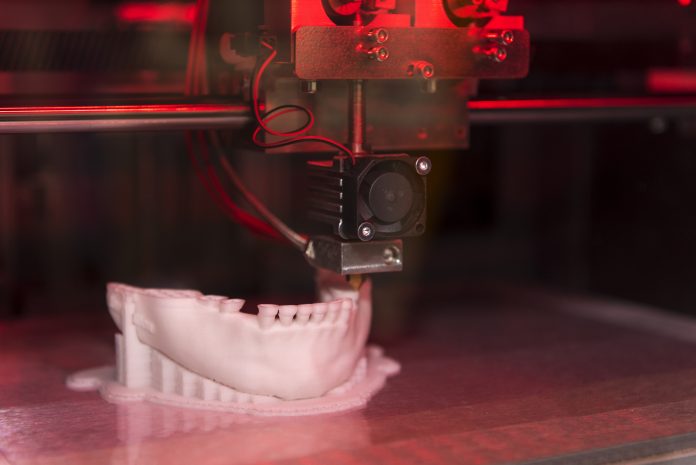Frost & Sullivan forecasts the global 3D printing materials market for the healthcare industry to account for R8.2 billion ($568.5 million) by 2024, with an impressive CAGR of 20.3% between 2018 and 2025. Material manufacturers with industry-qualified and regulated products have immense opportunity to cash in on double-digit growth opportunities.
As it is, the healthcare industry is rapidly adopting 3D printing solutions due to benefits such as unmatched flexibility of design and low-cost production of prosthetics, implants, medical devices and anatomical models. With technology progression and regulatory issues becoming clearer, this market will witness quantum change in terms of healthcare service possibilities.
‘The increasing penetration of 3D printing technology among medical, dental and the wearable devices sectors is set to augment growth with tissue and organ fabrication one of the most exciting opportunities on the table,’ said Dr. Leonidas Dokos, global director, chemicals and materials in Infrastructure and Mobility. ‘Lightweight and strong materials led by titanium, aluminium and plastic filaments are likely to witness sharp uptake in the healthcare industry, where having high strength and being lightweight are two critical cornerstones.’
The market presents enormous opportunities for material manufacturers, as it is currently in a development stage. However, material manufacturers must engage in high-level research and development to iron out inefficiencies. Dokos recommends vendors provide additional services as players are not acquainted with the process flow required to adhere to FDA regulations at an industrial scale. Further growth opportunities vendors can take advantage of include:
• Building economies of scope to achieve better innovation and performance metrics to aid the healthcare industry.
• Potentially redesigning the supply chain for existing products and leveraging both to pursue new business models.
• Forming collaborative partnerships between material manufacturers and machinery manufacturers to develop materials suitable for the needs of healthcare 3D printing. Machinery for bio-printing is still not 100% accurate, which leaves room for improvement.
• Building strategic partnerships between material developers for additive manufacturing and machinery manufacturers.
‘One of the biggest challenges facing 3D-printed healthcare product manufacturers has been the scarcity of qualified and compliant materials fit to be deployed on the human body. Adherence to stringent FDA regulations pertaining to 3D-printed healthcare products is a major challenge faced across the value chain,’ noted Dokos. ‘Furthermore, the market has witnessed slow adoption rates owing to the lack of technical understanding and clarity among end users regarding the medium and long-term benefits.’
FROST & SULLIVAN https://ww2.frost.com/





















